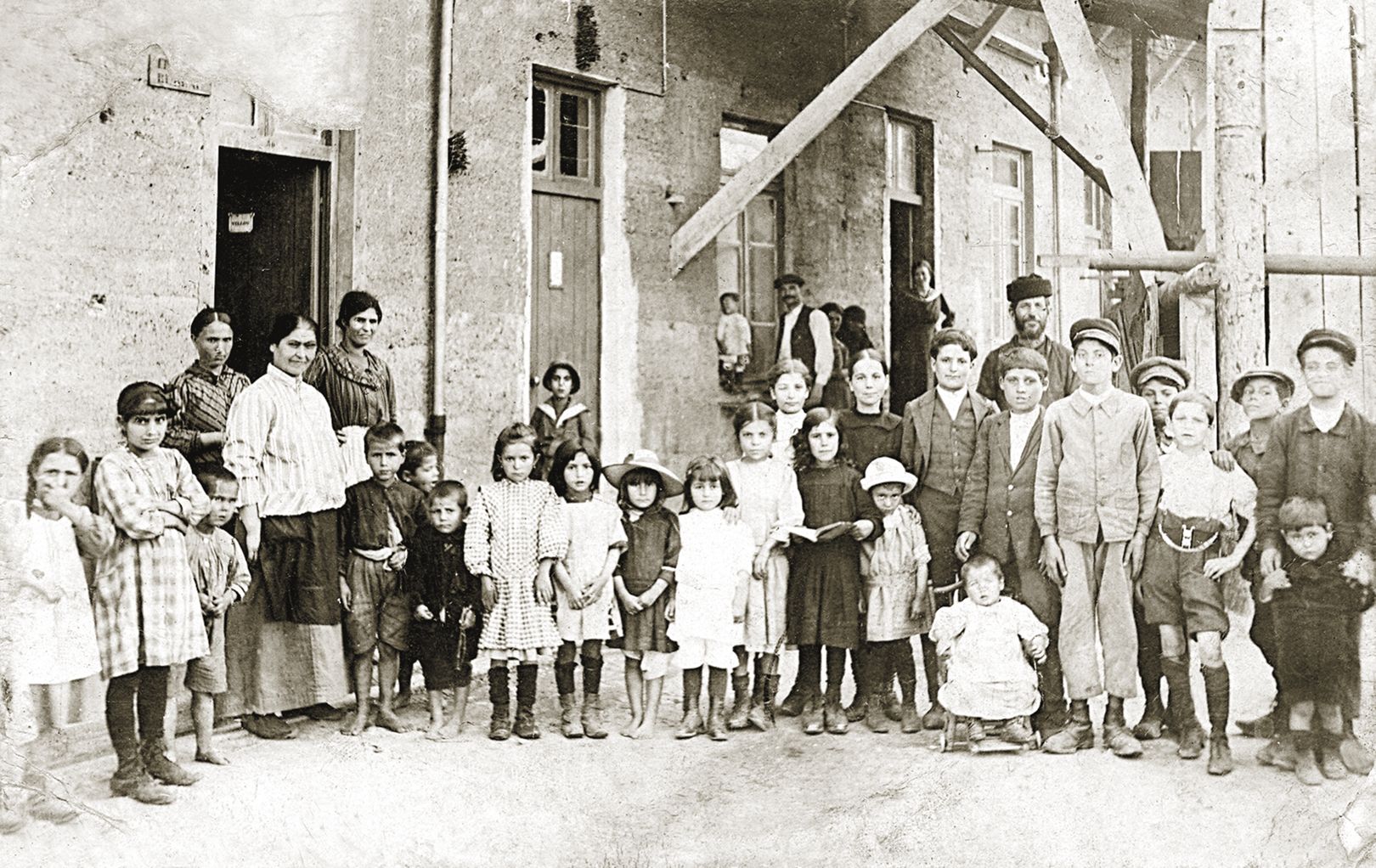Postwar internal migration to Volos
City
Migration Period
Full Description
The reasons that drive agrarian populations to move to urban centres vary according to the time period. In general, cities attract agrarian populations because they are presented as ideal places to search for employment. Hence, it is mostly economic reasons that cause internal migration from rural areas to urban centres and lead farmers to the factory gates. However, even though expectations of an improved quality of life and higher social status, as well as the need to escape the confines of small village communities, are all important drivers of urban migration, not all motives of internal migration can be traced back to socioeconomic factors.
Despite the Second World War and the German occupation, the population of the urban agglomeration of Volos and Nea Ionia increased between 1940 and 1951, reaching 65,090 people in 1951, an 18,5% increase compared to the 1940 census, when the population was 54,919. This can be partly attributed to the internal migration which took place before, during, and after the Greek civil war. In autumn 1946, hundreds of internal refugee families started reaching the cities, displaced by the military conflict or pressured by the combatants to abandon their villages.
The size of this ‘voluntary’ migration, however, paled in comparison to the one caused by the policy of mass, systemic village evacuations, implemented by the national army in the areas where the Democratic Army of Greece (DSE) was particularly active. The goal was to deprive the Democratic Army of Greece of support in the rural areas, especially the mountainous areas of Northern and Central Greece. As a result, during the Greek civil war, waves of refugees and internal migrants were forced to leave their villages and settle in the cities to escape persecution and the perils of war. Tens, or even hundreds, of thousands of people, mostly leftists, rushed to the cities where anonymity could protect them against the paramilitary groups that had been given free rein to scourge the countryside.
It becomes clear that the widespread violence and intense climate of fear, which were prominent during the period of the ‘white terror’ and, subsequently, the Greek civil war, were also major factors pushing agrarian populations away from rural areas and towards the relative safety of nearby cities, such as Volos. This movement also suggests that migration destinations were not arbitrary, but were deliberately chosen by the migrants based either on pre-existing social networks, or on new networks established through refugee identity, family and place of origin. As a result, a large number of people, impacted by the depredations of the civil war and the fear it instilled, were forced to abandon their homes in the villages and settle in the city of Volos. Some among them were even planning to live there permanently. In the city, these men and women would look for relative safety, anonymity and a better chance at securing a livelihood by turning to wage labour, even if this type of employment was both precarious and underpaid.
With regards to the migration of women, female labour in the industrial sector had been well-established in Volos ever since the interwar period, particularly in the tobacco and textile industries, offering the newly-arrived young women from the mainland of Thessaly and Pelion a widely accepted life and work paradigm. These women came to Volos looking for employment in a labour market which had already been established and a social environment where female labour was no longer treated with caution and suspicion. Urban migration, including migration to Volos, would continue throughout the civil war and the years that followed it.
These former agrarian populations, which were cut off from their birthplaces and forced to flock to the cities, were destitute and disadvantaged, most had no skills or resources, and lived on rations distributed by charities. Hence, they became a cheap labour force which contributed both to the rise in local industrial production and the reconstruction of the entire country during the 1950s. However, Greek historiography has only recently started to delve deeper into the dramatic changes brought upon the personal and professional lives of internal migrants and the way they experienced them, their attempts at integration into the urban social fabric, and the treatment they received from the native inhabitants of the urban centres.
Bibliography
Polymeris Voglis, ‘The rural society during the Civil War’, in Ch. Catziiosif (ed.), History of 20th century Greece. Reconstruction, Civil War, Restoration, Vivliorama, Athens 2009.
Polymeris Voglis, Becoming a subject. Political prisoners during the Greek civil war, Alexandreia, Athens 2004.
Angelos Elefantis, They took Athens away from us… Rereading history 1941-1950, Vivliorama, Athens 2003.
David Close, The Origins of the Greek Civil War, Routledge, Abingdon 1995.
Giorgos Margaritis, History of the Greek Civil War, v.2, Vivliorama, Athens 2001.
Thanasis Betas, ‘The Matsangos Tobacco Industry in Volos, 1918-1972’. Employment and survival in Volos, unpublished PhD dissertation, University of Thessaly, Volos 2015.
Li Sarafi, ‘White terror as a mechanism of quashing the spirit of resistance. The prefecture of Trikala in 1945’, in Ilias Nikolakopoulos, Alkis Rigos, Grigoris Psalidas (eds.), The Civil War. From Varkiza to Grammos, February 1945 – August 1940, Themelio, Athens 2002.
Statistical Yearbook of Greece, The population of cities with more than 10,000 inhabitants in 1951: The censuses of 1920, 1928, 1940 and 1951, National Printing House, Athens 1955.
